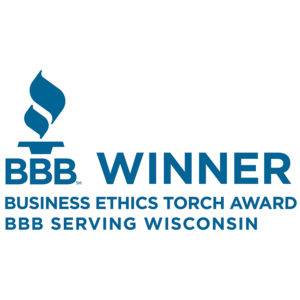What’s all this noise about Call Blocking? Seems like everyone is talking about it, and there is a different side speaking out almost daily on this topic, so there is a lot to discuss here.
Let’s start at the beginning. Before we can understand why Call Blocking is needed, we need to expand on three key terms – Robocalls, Call Labeling, and Call Blocking. Robocalls have yet to be defined officially, but generally refer to high-volume calls made using a contact platform. Call Labeling involves Caller ID that projects notices of “Possible SPAM” or a “Fraud Call” to the recipient. And Call Blocking, while a little harder to explain, generally involves carriers or apps that do not deliver certain phone calls in the expected method to the consumer’s phone.
Right now, consumer groups have a powerful and growing voice because of the increasing frustration over Robocalls due to their sheer volume and that so many calls that are scams or fraudulent. You’ve undoubtedly received calls from “Debbie in card services” or “Vacation properties” – many consumers have simply stopped answering calls from numbers they don’t recognize. Regulators and phone carriers appear to be baffled by how to fix this problem. While Congress is applying heavy pressure to correct these issues, nothing has been resolved yet.
Call Labeling outlines the way a call appears on the recipient’s cell phone – think Caller ID on steroids. Added identification features are provided by app developers (and, in some cases, pushed to customers by phone carriers)
to help consumers determine whether a call is “legitimate”. With hundreds available through app stores, these apps allow consumers to subscribe for little to no cost, making them extremely popular.
A bit of a misnomer, Call Blocking is something that began with carriers blocking calls from unassigned or invalid phone numbers not in use. In recent years, Call Blocking has taken on a broader scope with developers creating apps to “trick” auto contact platforms. Popular apps claim to have blocked over a billion calls. For example, You Mail uses a grading system to determine if calls appear to be coming from high volume callers, allowing consumers to “block calls” by playing a fake message about the phone number being disconnected. Another app, NoMoRobo, flags calls, pushing them directly to voicemail. The recipient can then elect to listen to the message (if one was left), and block future calls or mark the number as wanted.
The algorithms used by these apps remains a bit of a mystery, but they seem to look at call volumes originating from the caller and data from other users marking those calls as unwanted. A very important distinction to make here is that “unwanted” is not the same as illegal – how these two are handled is a source of concern for those who place calls to reach consumers, much like ourselves. Ultimately, the true concern lies in that the algorithms used can make the decision of allowing, or not allowing, a call to go through to the consumer, without the consumer fully understanding what is being blocked. Such blocking can ultimately impact important calls about their credit and personal healthcare finances.
The effect of this new iteration in “call blocking” varies from creditor to creditor and from agency to agency, but many have reported contact rate reductions in the double-digit range. Simply put, this means call labeling and blocking are taking a significant toll on a typical call center’s ability to reach consumers. Regulators and consumer groups have expressed the desire to allow consumers to choose their “preferred method of communication”, whether via phone, text, chat, or email. Existing laws such as the FDCPA, written long before most current technologies existed, are under review by the FCC and lawmakers as well as the BCFP (formerly CFPB). The one common thread coming out of the discussions is that consumer consent is a critical factor in how chosen methods of communications are seen by consumers and regulators.
While modifications to existing laws are in progress, we strongly suggest that our clients enhance consent forms for to include “all forms of communication” that a consumer may choose. Our ability to reach your patients may be dependent upon it. If you would like a copy of our suggested consent language please feel free to reach out to us, sales@stcol.com.
About State Collection Service, Inc.
Since 1949, State Collection Service has provided quality collection service to countless healthcare organizations.
Through experience and innovation, State Collection Service has grown to become a tremendously credible and nationally-recognized collection agency offering services from pre-registration to bad debt. It is upon the basis of ethical behavior and a dedication to integrity that each State Collection Service employee works to uphold the company’s vision – Partnerships for a Lifetime.
*This article first appeared in “A State Collection Service, Inc. Newsletter Volume 24, Issue 2, Second Quarter 2018”















